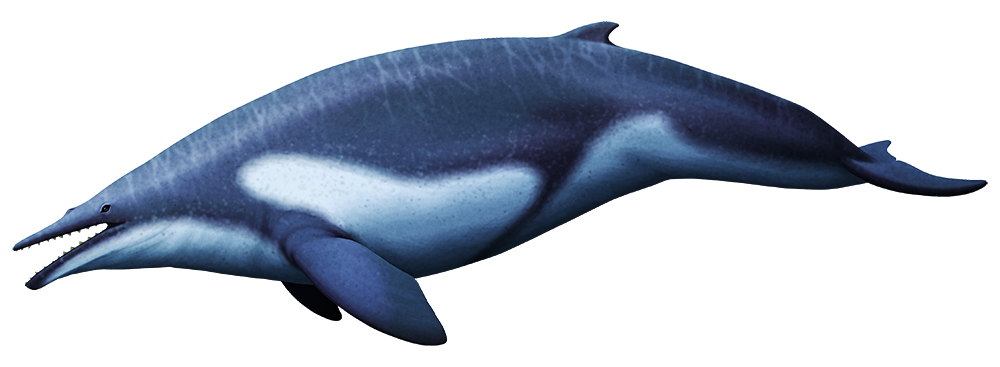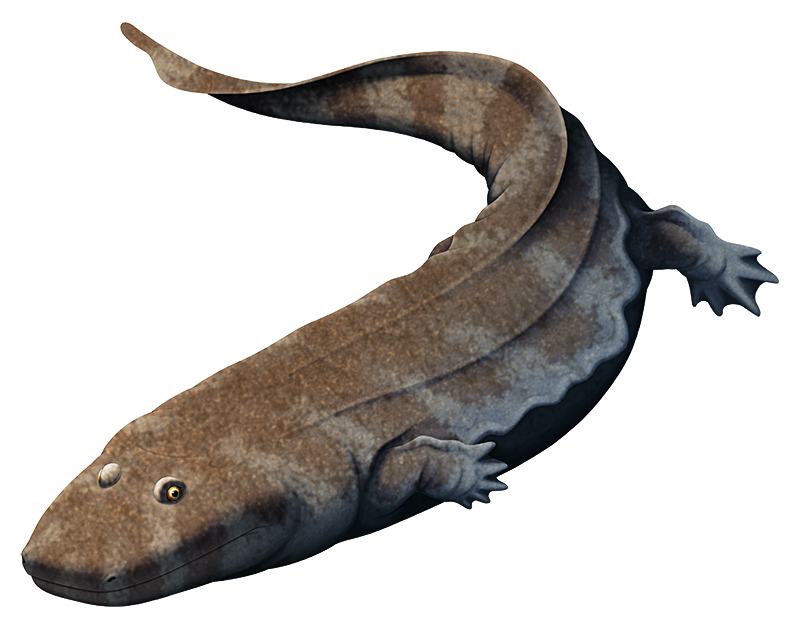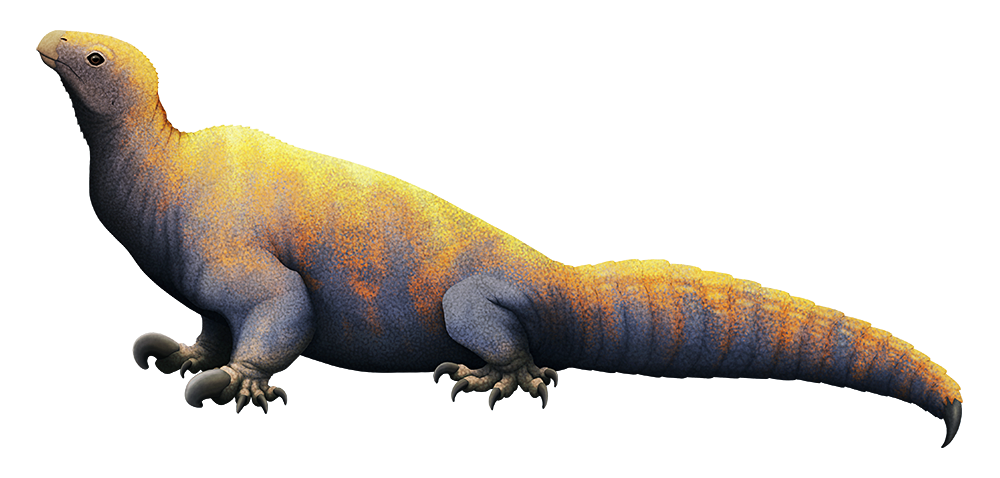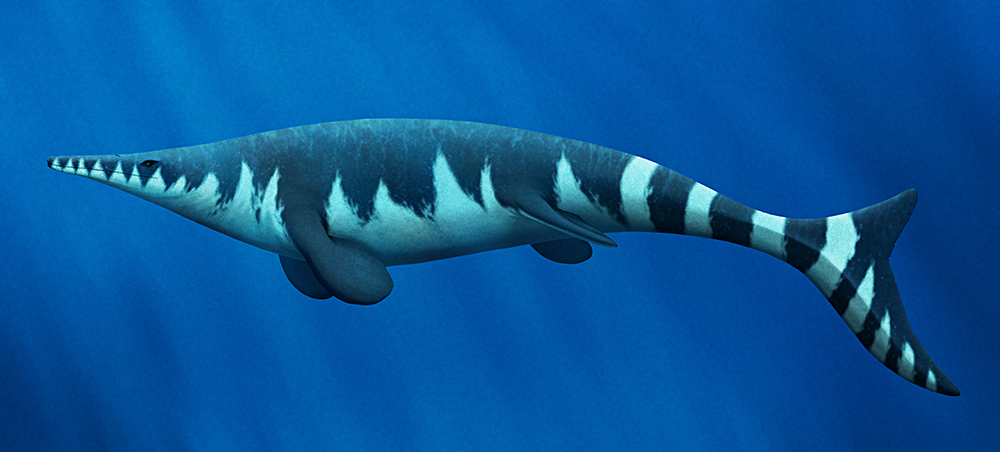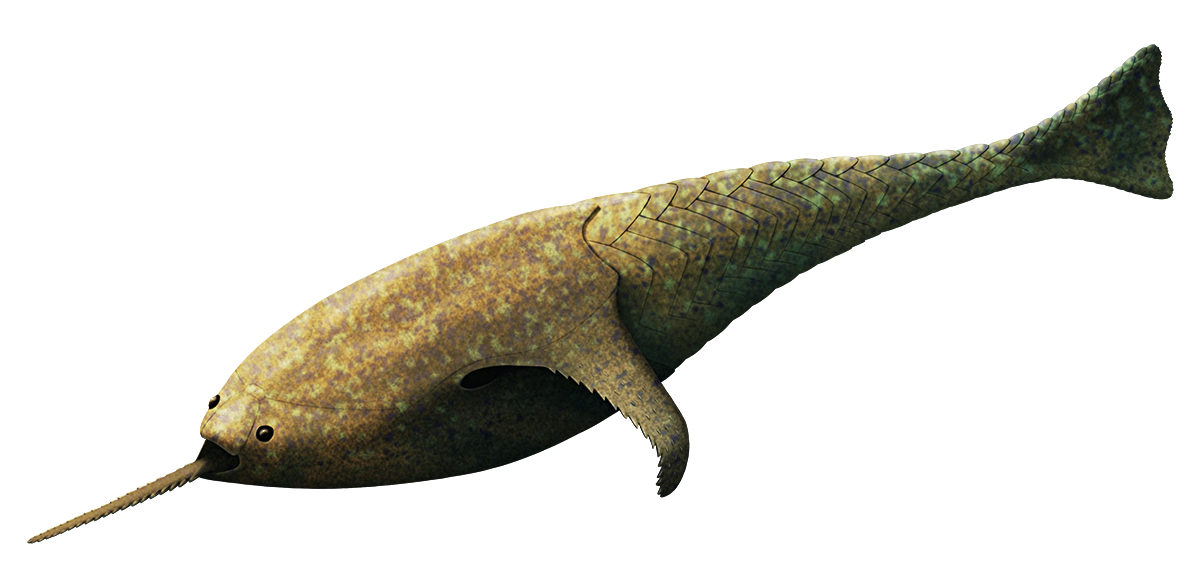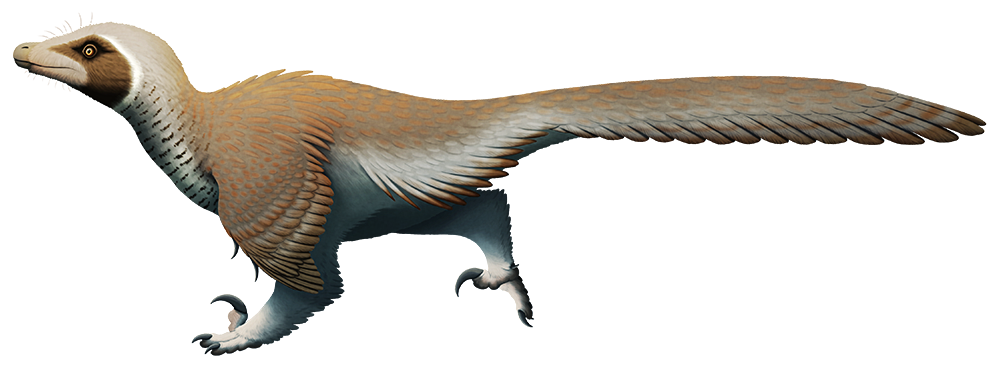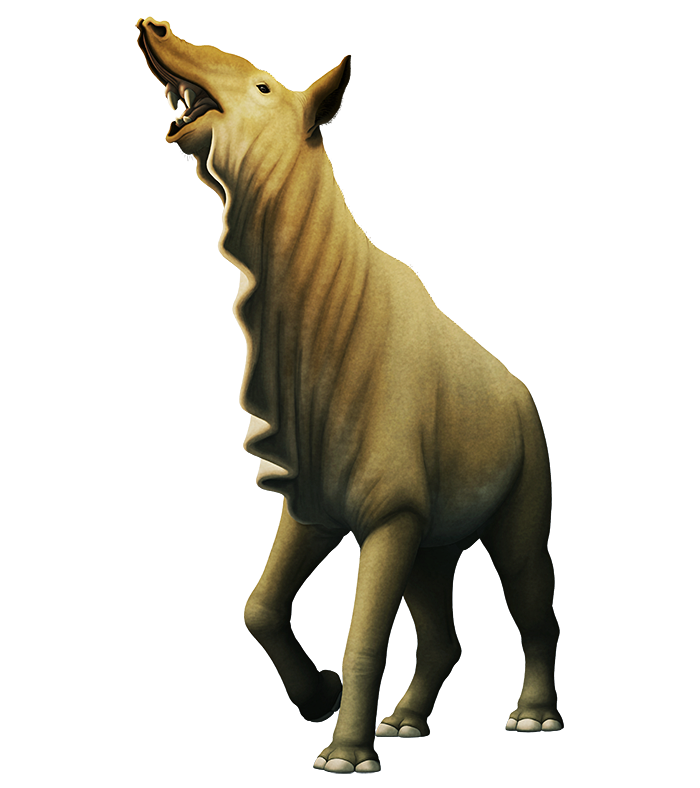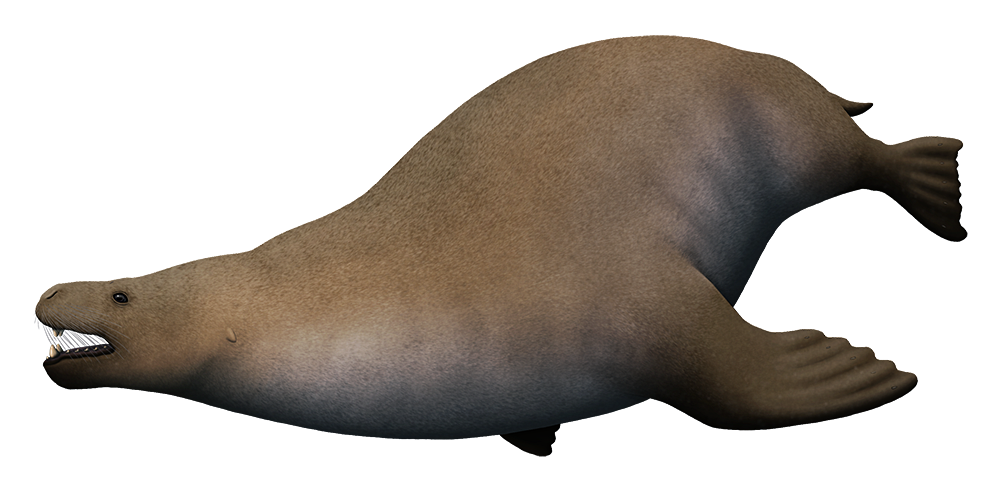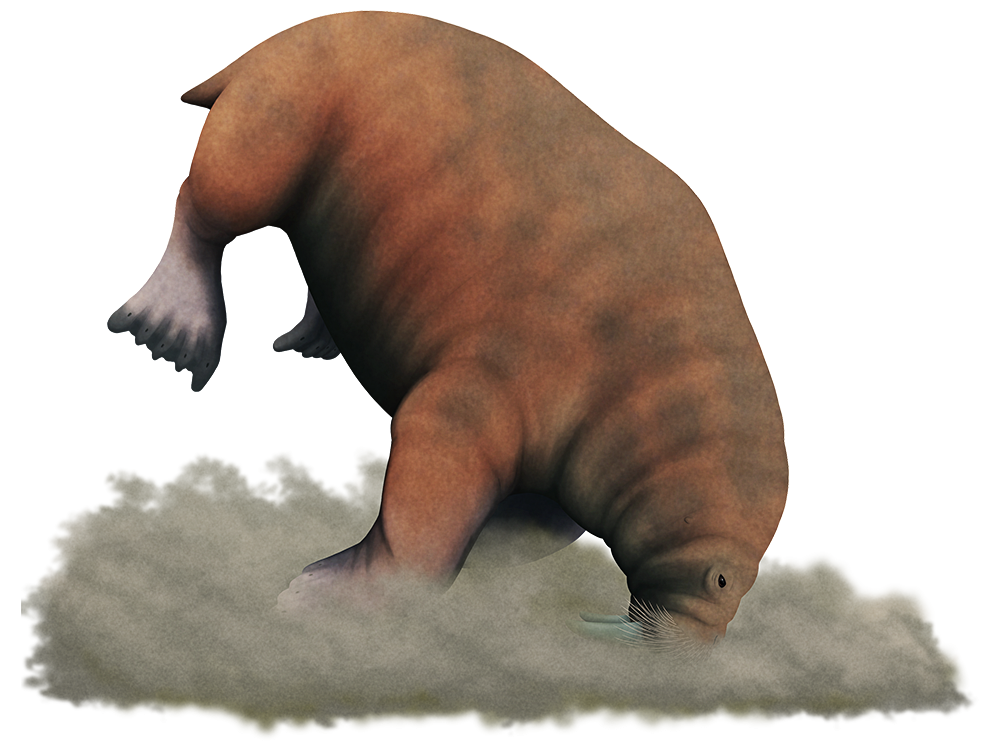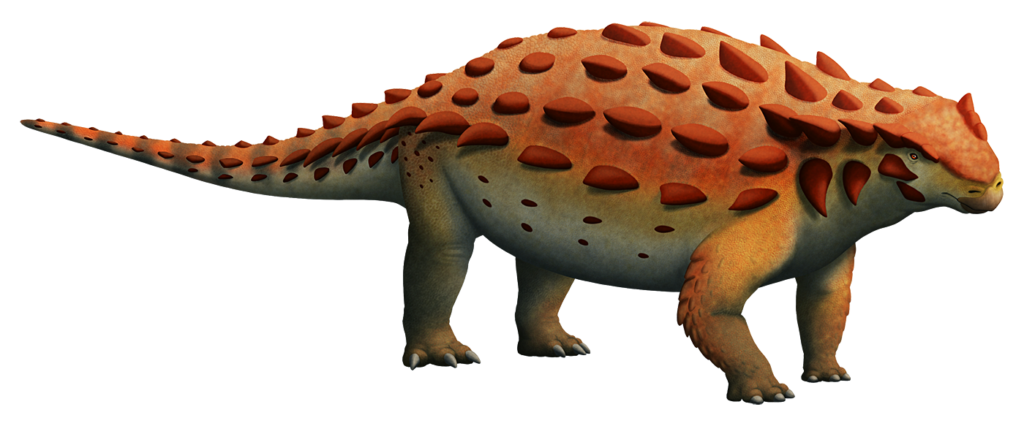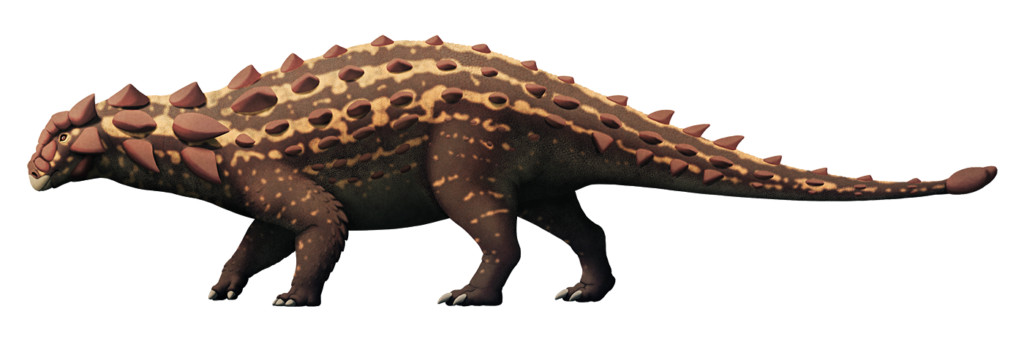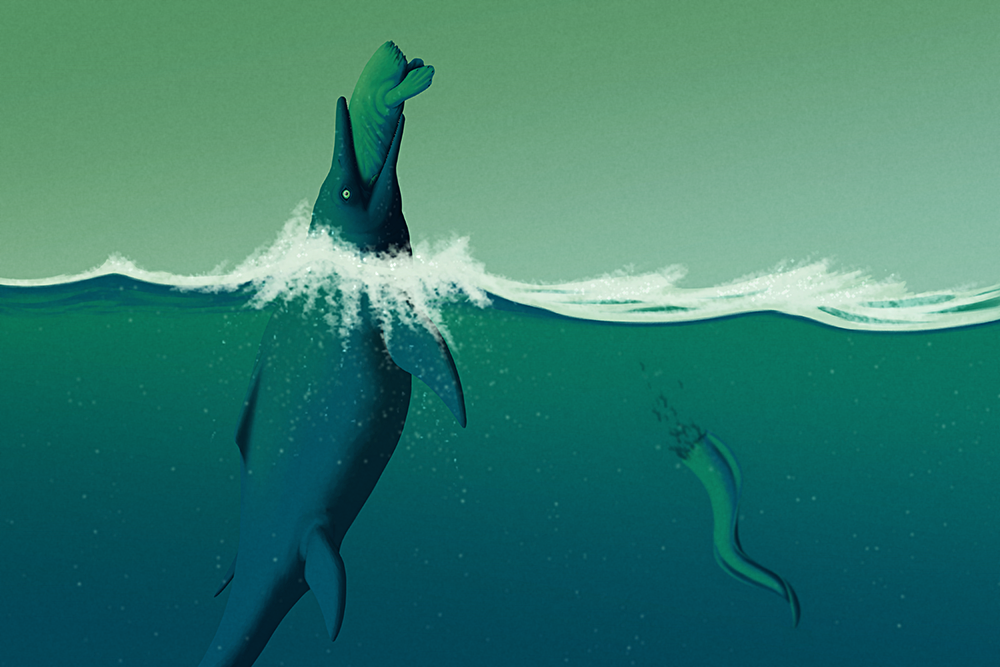It’s March, and that means it’s time for Cambrian Explosion Month!
Continue reading “Cambrian Explosion Month #01”Borealodon
Modern mysticete whales all have baleen plates in their mouths, but before the evolution of these specialized filter-feeding structures the early members of their lineage still had toothy jaws.
Borealodon osedax here was one of those “toothed mysticetes”, living about 30-28 million years ago during the mid-Oligocene off the coast of Washington state, USA.
Unlike modern baleen whales it was small, about the size of a modern porpoise at around 2m long (6’6″), and the wear on its multi-cusped teeth suggest it was a predator taking slicing bites of fish – possibly using suction-assisted feeding like its close relatives the aetiocetids.
Its fossilized remains are also a rare example of an ancient whale fall, with characteristic bore holes in its bones from Osedax worms.
Spathicephalus
Spathicephalus mirus here was part of a group of amphibian-like animals called the baphetoids, a lineage that weren’t quite true tetrapods themselves but were still very closely related to them.
Living in Scotland during the mid-Carboniferous period, about 326 million years ago, this 1.5m long (~5′) stem-tetrapod had an incredibly unusual head compared to its relatives – wide and flat, almost square in shape, with its jaws lined with hundreds of tiny chisel-like teeth.
Most other stem-tetrapods had deep skulls with large teeth, adapted for fish-eating, so clearly Spathicephalus was specialized for a very different diet. Some comparisons have been made to flat-headed ambush predator plagiosaurid temnospondyls like Gerrothorax, but a better ecological comparison might actually be filter-feeders like “pancake crocs“.
Ancistronychus
Drepanosaurs were already some extremely weird animals, even among all the other weirdos of the Triassic period.
These strange little tree-climbing reptiles had chameleon-like bodies, humped backs, long necks, and oddly bird-like skulls with toothless beaks – and then some of them also had bizarre forelimb anatomy with a single enormous claw on the second finger of each hand, along with a claw on the tip of their prehensile tail.
But new discoveries are showing that some members of this bizarre group were doing something different.
Ancistronychus paradoxus here lived during the late Triassic, about 227 million years ago, in what is now the southwestern United States. Measuring around 50cm long (1’8″), its enormous hand claws were unusual compared to its close relatives, with a distinctly wide and hooked shovel-like shape.
Along with another recently-discovered species, Skybalonyx skapter, and the weird burly arms of Drepanosaurus, this suggests that instead of tree-climbing some drepanosaurs were instead much more specialized for digging. They may have been Triassic equivalents to modern anteaters or pangolins, using their enlarged claws to excavate burrows and rip their way into insect nests.
Gavialimimus
During the late Cretaceous period, about 72-66 million years ago, the Oulad Abdoun Basin region of Morocco was submerged under the Atlantic ocean – and the water above it was absolutely teeming with mosasaurs.
Fossils of at least a dozen different species of these predatory marine reptiles have been found in the area, and they seem to have all been occupying different ecological roles to avoid being in direct competition with each other. Many had conical piercing teeth adapted for gripping onto slippery soft-bodied prey, but others had rounded blunt teeth for crushing hard shells, and some even had sharp shark-like teeth for tearing flesh.
And one of the most surprising recent discoveries from this diverse ecosystem was Gavialimimus almaghribensis.
This 7m long (23′) mosasaur was part of the plioplatecarpine lineage, but it had uniquely long and narrow jaws with pointy interlocking teeth and highly retracted nostrils. Its snout shape resembled that of a crocodilians like modern gharials more than any of its short-skulled close relatives, and it was probably specialized for a similar diet of small fast-moving fish.
Doryaspis
While Doryaspis nathorsti here looked a bit like a weird prehistoric sawfish, it was actually an ancient jawless fish more closely related to modern lampreys and hagfish.
Measuring just 15cm long (6″), this odd little fish lived in the shallow seas of what is now the Arctic Svalbard archipelago, around 407 million years ago during the early Devonian period when the region was located in much more tropical latitudes.
It was part of a group called the heterostracans, a lineage of jawless fish with heavy armor covering the fronts of their bodies. They had no paired fins and relied solely on their powerful tails for propulsion, and some like Doryaspis also developed large stiff wing-like projections from the sides of their armor that acted like hydrofoils to provide extra lift while swimming.
But the strangest feature of Doryaspis is that pointy serrated saw-like “snout” – which wasn’t actually a snout at all, but instead formed from a part of its jawless mouth roughly equivalent to the lower lip and chin.
It’s unclear what the purpose of this appendage was, but it might have been used for prey detection, probing around the muddy seafloor in a similar manner to sawfish or the big-chinned porpoise Semirostrum.
Shri
About 72 million years ago, in the Late Cretaceous of what is now Mongolia, a dead dromaeosaurid dinosaur lost its head.
30 years ago, in 1991, its headless fossilized remains were discovered during a joint Mongolian Academy of Sciences / American Museum of Natural History expedition in the Gobi Desert.
For a long time the specimen was known only by the nickname of “Ichabodcraniosaurus”, in reference to a character haunted by a headless ghost in the story The Legend of Sleepy Hollow – but now it’s finally been given a full scientific description and a proper name.
Say hello to the first new non-avian dinosaur of 2021, Shri devi!
Named after a buddhist deity, this little dinosaur was around 2m long (6’6″), roughly the size of a modern peacock or wild turkey. It was a very close relative of Velociraptor, but lived in a slightly different part of the ancient Gobi than its famous cousin, giving us a glimpse of how dromaeosaurid species varied across that region.
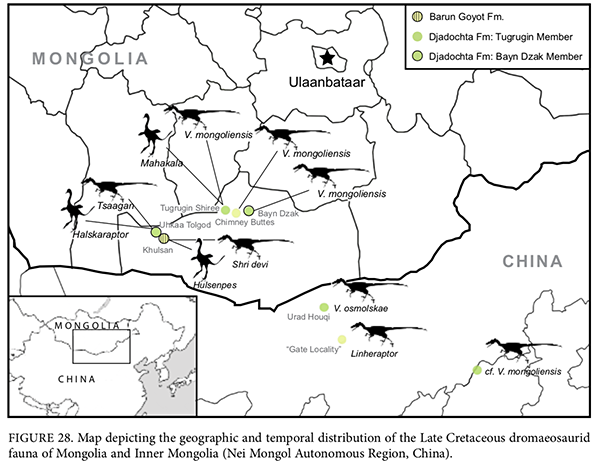
Paraceratherium
While the largest animal known to ever exist is an aquatic mammal (the modern blue whale), mammals on land have never managed to attain the same sort of massive sizes seen in the sauropod dinosaurs. This is probably due to a combination of factors, including their reproductive strategies, metabolisms, and physiological differences like lacking internal air sacs – but even being limited to overall smaller body sizes, some of the mega-mammals known to have evolved during the Cenozoic were still absolutely enormous.
And one of the largest was Paraceratherium transouralicum.
(The exact name of this animal has a long and complicated history, and in various times and places it’s also been known as Indricotherium, Baluchitherium, and Pristinotherium.)
Found across much of Eurasia during the Oligocene, about 34-23 million years ago, Paraceratherium was part of an ancient lineage of long-legged hornless rhinoceroses. It stood around 4.8m tall at the shoulder (15’9″) – big enough that most modern humans would be able to walk right underneath its belly without even having to duck – and it had elongated limbs and a long neck that gave it an overall appearance much more like a giant weird horse than a rhino.
There was a pair of downward-pointing tusks at the front of its upper jaw, and the shape of the nasal region of its skull suggests its nose formed a short prehensile tapir-like trunk, which would have been used to help grab and strip leaves from high branches.
I’ve also reconstructed it here with a speculative dewlap on its neck, used for both display and thermoregulation.
Eons Roundup 9
New year, new PBS Eons commission roundup day!
The ancient walruses Neotherium and Valenictus, from “How the Walrus Got Its Tusks”
https://www.youtube.com/watch?v=BKDGYGV2LK8
The nodosaurid ankylosaur Borealopelta, in both alive and “bloat-and-float” carcass states, from “The Dinosaur Who Was Buried at Sea”
https://www.youtube.com/watch?v=a-UZXBF63z4
The ankylosaurid ankylosaurs Gobisaurus and Dyoplosaurus, from “How Ankylosaurs Got Their Clubs”
https://www.youtube.com/watch?v=lRt-4SdzWrk
Guizhouichthyosaurus
In the mid-Triassic seas, covering what will one day be part of southwestern China, an ichthyosaur flails at the surface desperately trying to deal with an ambitiously large meal.
240 million years later human paleontologists will name their kind Guizhouichthyosaurus tangae, and initially assume that their narrow snout and small peg-like teeth are suited only for a diet of small soft-bodied fish and cephalopods.
In reality they eat a much wider range of prey – including other marine reptiles.
But for a 5m long (16’5″) Guizhouichthyosaurus, perhaps this particular catch is a little too much. The unlucky thalattosaur was a rather large example of a Xinpusaurus xingyiensis – nearly matching the ichthyosaur in length at around 4m long (13’2″), although much less bulky – and after biting off the head and tail the predator is still struggling to actually eat the sizeable carcass.
Even with a gravity assist from holding their prize vertically up above the water, swallowing is proving difficult and the Guizhouichthyosaurus can’t breathe around it.
They’re slowly suffocating.
They’ll eventually get it down their gullet, but by then it’ll be too late. Weak and dizzy from asphyxiation, they’ll soon sink to the sea floor and never resurface, their body settling not very far from where their prey’s severed tail fell.

